Fall is in the air, and with that comes the end of the growing season. Since I was a teenager, I’ve enjoyed reminders of the growing season, so I collect plant parts and bring them inside to enjoy during the colder months when many plants are dormant.
Oriental Bittersweet
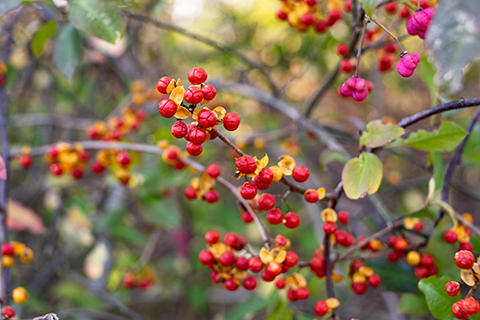
Invasive oriental bittersweet
The first plant that comes to mind is Oriental Bittersweet (Celastrus orbiculatus), a woody vine with colorful fruit. Using strands of vine with berries to make wreaths or table arrangements engenders the fall vibe.
But beware, this plant is invasive; pitching the vines into the woods or a compost pile when you are finished can lead to new infestations. Discard in the trash so you aren’t contributing to the spread of this invasive plant.
Grape Vines
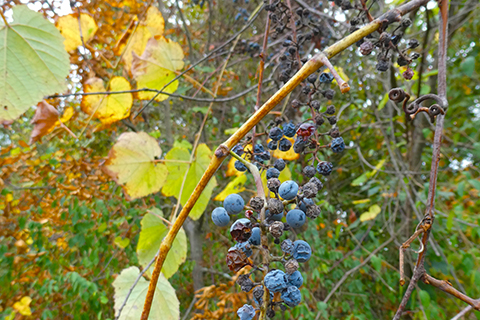
Wild native summer grape (Vitis aestivalis)
Wreaths are a common use for plant material and another source is grape vine. This woody, woodland vine, with shredding or peeling bark can also be coiled into a wreath.
There are seven species of wild native grapes in Pennsylvania; four of them are common.
Pine Cones
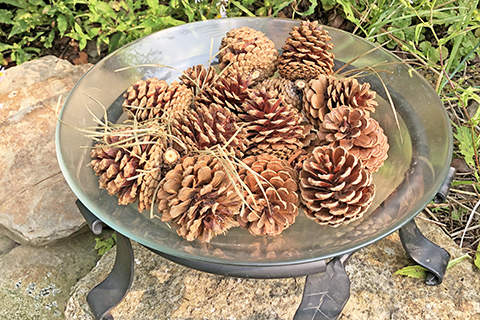
Red pine cones in decorative bowl
Pine cones from conifers such as red and white pine, spruce, fir, tamarack, and hemlock can also be collected in the fall.
Using these in wreaths or garlands, or as filling for a decorative bowl on the coffee table are ways to incorporate the outside into your home.
Fern Fronds
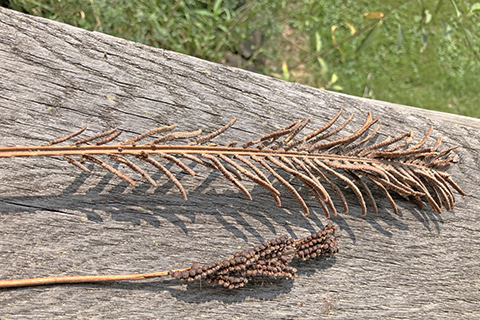
Ostrich fern (top) and sensitive fern (bottom) fertile fronds
With a little scouting and knowledge of plants, you can find seeds, pods, and other structures like fertile fern fronds. Two common species that produce distinctive, fertile fronds are ostrich fern (Matteuccia struthiopteris) and sensitive fern (Onoclea sensibilis).
Their green, sterile fronds senesce in the fall, leaving behind a persistent, fertile frond which can be used in fall arrangements.
Seed Pods
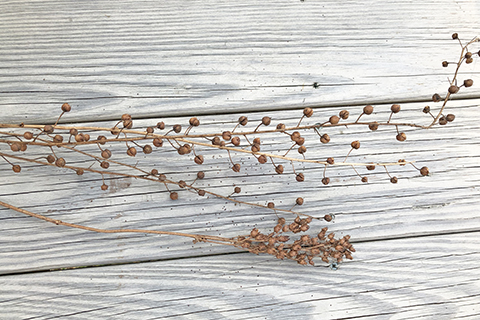
Moth mullein (top) and beardtongue (bottom)
Other species with unusual and persistent seed pods that I like to incorporate into arrangements are beardtongue (Penstemon digitalis), a great native plant for pollinators, and moth mullein (Verbascum blattaria), a non-native weed.
Two species that may be tempting to bring inside for decorations are cattails and milkweed pods. Unless you like chasing and cleaning up thousands of fluffy seeds, this is not recommended.
The fluffy pappus (or “floss”) work great for dispersing seeds by wind, but can make a mess inside. Milkweed pods do work well for inside decorations once seeds have dispersed, however.
Respecting the Resources
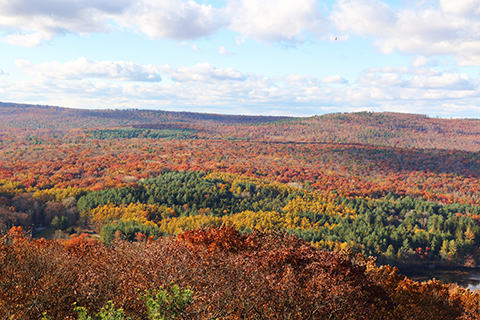
MIchaux State Forest in the fall
As with all natural resources, be mindful of the impact of collection. Removing plant material containing seeds or spores lowers the reproductive potential, so collect responsibly.
For invasive species, collect all you want but avoid inadvertent spreading of seeds. Good stewardship requires proper disposal to prevent new invasive populations.
Collecting plants and plant parts from state parks and state forests is not allowed without written permission. There are similar restrictions to collecting on state game lands.
Good stewardship also demands landowner permission before collecting on private land that is not yours.
The suggestions above are just a few of the myriad plant parts that can be used for decorations.
Fall is a wonderful time to be outside, and perhaps you will be inspired as you are out and about to bring some outside in.